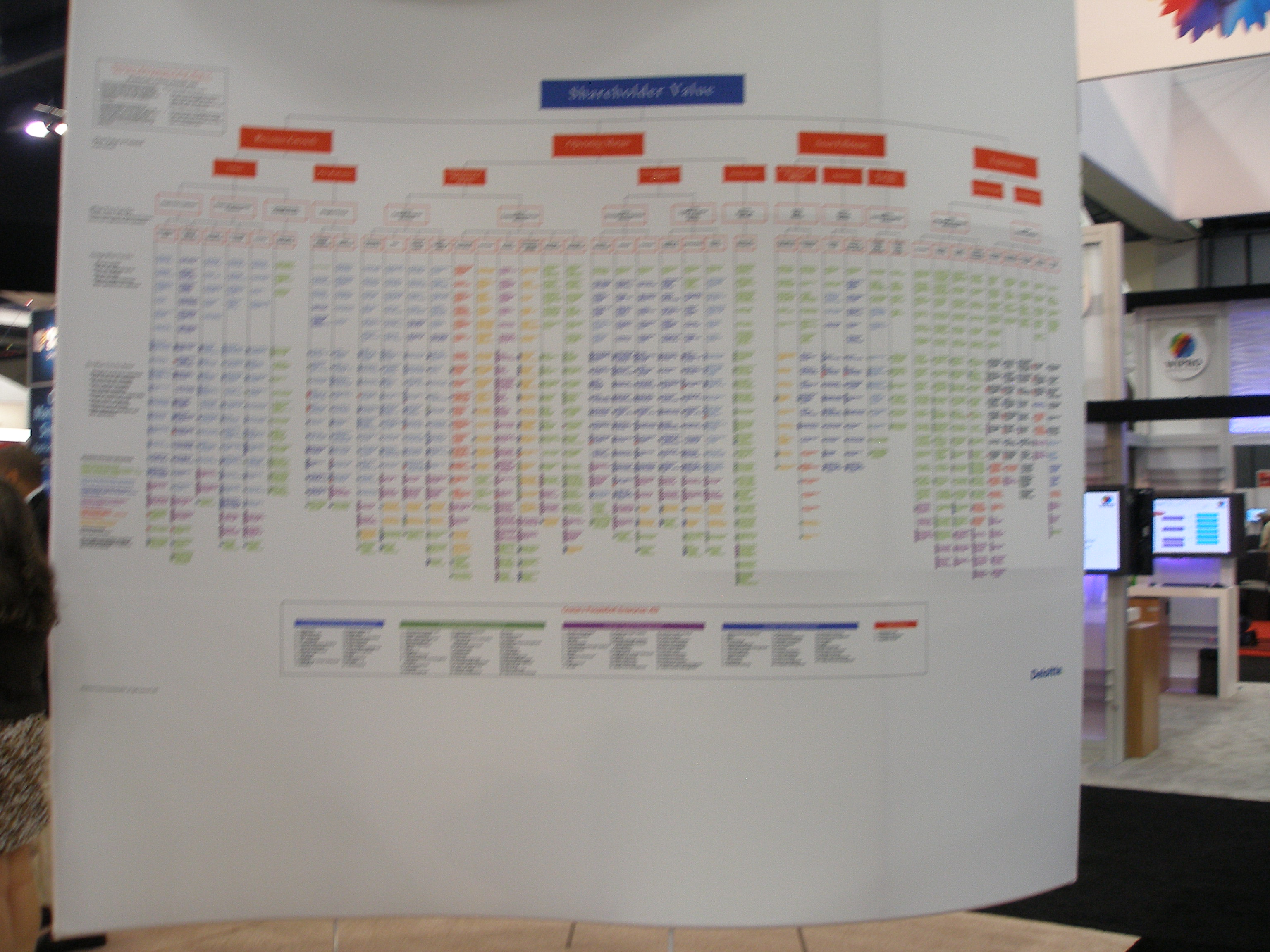Selling value at Oracle OpenWorld and beyond

I took some interesting (but blurry) photos yesterday in the exhibition hall at Oracle OpenWorld (OOW). Deloitte had festooned its booth with these huge charts that detailed how a firm would examine value drivers across different aspects of its organization and via different Oracle applications.
I backed up a ways to get this photo (and sadly, it's too fuzzy too read due to the curvature of the wall) but it shows hundreds of drivers of shareholder value. This is exactly the discussion vendors and integrators need to have with prospective software buyers. Buyers though need to challenge the value/TCO/ROI calculations to ensure that decisions are still relevant given newer choices for pure-play SaaS products. If your project team really wants to understand how to build a better business case, see if you can find an old article I wrote for the late Optimize magazine called "A new kind of business case"; however, I wrote that long before great SaaS solutions existed.
Accenture had a different approach. They posted a number of critical statistics on top of their booth.
If you're an Oracle customer looking for an integrator with large numbers of trained people, then the ACN guys have you in their sites. The claims of 49,500+ trained implementers and over 4,900 projects is certainly enviable.
Value drivers are definitely different and evolving and vendors, integrators and customers will need to adapt their mindsets and spreadsheets. What will change? Here are some factors:
- not all solutions will need hardware - Pure, true, multi-tenant SaaS applications require no hardware for the customer. Do your economic models account for this critical difference?
- not all solutions require customers implement upgrades and patches - Again, pure, true, multi-tenant SaaS applications do upgrades for free (or close to it) for customers. Given the cost that these upgrades trigger in IT organizations, is this accounted for correctly in your assessments?
- while many systems scale upward, do the solutions under consideration also scale downward? Can your business shrink (e.g., via a divestiture) and the cost of IT shrink with it? - if you intend to keep applications and hardware in house, have your costing models accounted for the energy cost differences between older servers and newer units with newer (and fewer) processors?
- if you intend to keep applications and hardware in house, have you compared the amount of time your IT staff will spend maintaining, updating, securing, etc. the in-house solution vs. a pure, real, multi-tenant SaaS solution? If you can free up IT staff from systems admin and upgrade activities, what's the value of their time being spent on new strategic IT initiatives? I don't know exactly how to quantify this in all cases but you must examine the opportunity cost of keeping IT staff tied up on mostly tactical activities. Make sure you have solid business reasons for keeping these staff focused on these tasks - it may be a luxury many companies will find harder and harder to justify.
- be sure to re-evaluate how much systems integrator, outsourcer and implementation assistance you need for future projects. If these costs aren't going down, you may need to find different service partners, partners with better and modern tools or different software.
- Make sure you understand the cost to integrate all applications to each other. Nowadays, integration is on-premise to on-premise, on-premise to SaaS and SaaS to SaaS. Do you have the right tools to do this work? Do you need different expertise (in-house or contracted) to make integration happen and stay working long-term?
